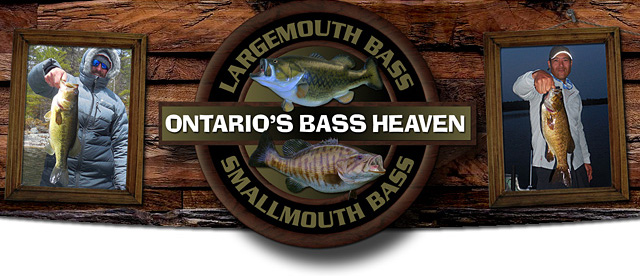Smallmouth Bass River Fishing Tips
By Chad Betts - Betts Guide Service
In the State of Michigan we're blessed with infinite fishing possibilities such as salmon,
trout and steelhead, which are everywhere in our state. There is one fish that
stands out for summer fun and it's the Smallmouth Bass.
River smallies are a very accessible fishing recourse in our state and
for the most part overlooked. Many Western Michigan Rivers such as the
Thornapple, Flat, Grand and Rogue rivers hold large numbers of these fine
fighting fish. Some rivers such as the Muskegon and Big Manistee turn on big
numbers of larger smallmouth in late June, July, August and September. It
seems the average fish on these rivers is 10 to 14" but larger fish are not
uncommon. Pre-spawn smallies in late May and June can reach sizes an excess
of three pounds!! Trust me, on any rod that is fun!
Where to find Smallies:
Smallmouth Bass in river systems are without a doubt a structure
oriented fish. Any structure that is in slow moving water usually holds
fish. Log jams, logs, rocks and erosion control structures always seem to
have smallies. The three biggest things I've noticed about Smallmouth
Bass are that they love slower moving water, structure, and bright sunshine.
Mid day is one of the best times to fish them.
The best technique I've found for Smallmouth Bass is to float these rivers with
either a single person float tube, canoe or drift boat. This portion of the
technique is important because you will need to follow the shoreline closely
and try to present your fly or lure to any fishy looking structure you may
pass. Unlike trout, smallies seem to enjoy the backside or downstream side
of logjams and structure.
What to use:
There are two types of tackle that work well for Smallies. Fly tackle and
light spinning gear. For Fly tackle in rivers, 9' 5 or 6wt fly rod with
either a floating fly line or sinking tip fly lines. Floating lines are
great for shallow water or fly fishing poppers. Sink tips are great for
fishing streamers down deeper near structure where bigger Smallmouth line
and feed.
For spinning gear I enjoy fishing a 7', medium action spinning spooling
with 8lb test. Depending on the size of fish and the amount of logs or
structure, you may want to go lighter or heavier on your monofliment line. One
nice thing about Smallmouth Bass is that they do not seem to be line shy but in
gin clear water, a quality fluorocarbon leader works well.
Flies or Lures:
Over the years I've found that Smallies love flies, small crank baits,
and tube jigs. Some of the best flies I've found to be are Clouser minnows,
any number of crayfish patterns, woolly buggers, and big buggy nymphs with
rubber legs.
For lures, I enjoy success on small crank baits such as the Rebel Wee-R
in the smaller sizes, Rapala Shad Raps, and smaller buck tail and tube jigs.
As for color, natural tones such as brown, orange, yellow, olive and black
work well in flies. The absolute main food supply for river smallmouth is
the crayfish, so colors that imitate crayfish work great. Natural colors in
crank baits and tube jigs that mimic crayfish and bait minnows work well but
don't be afraid to try off the wall colors like Chartreuse and orange.
Sometimes something different works well also.
Smallmouth Bass are accessible and easy to find and unlike most trout
streams, warm water streams are relatively closer to home and a great way to
beat the doldrums of summer. Pound for pound no other fishing fights harder
for their size than Smallmouth Bass so get out and give river Smallies a
try. You won't be disappointed!



